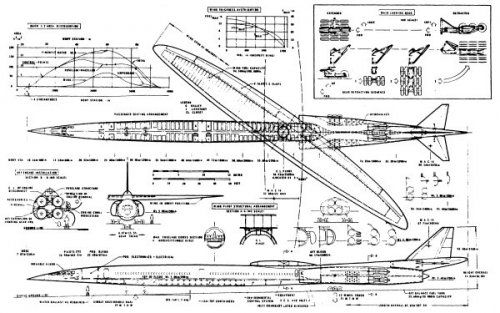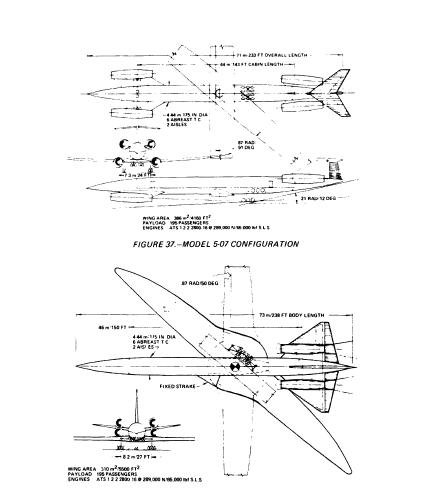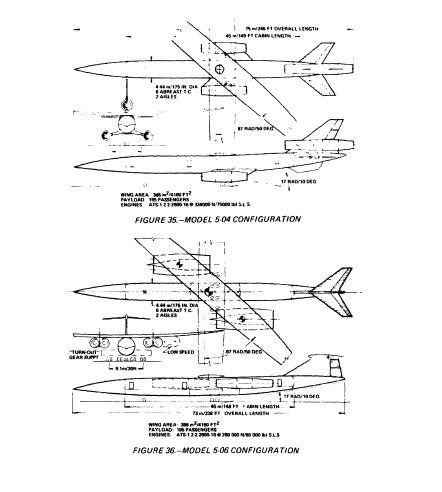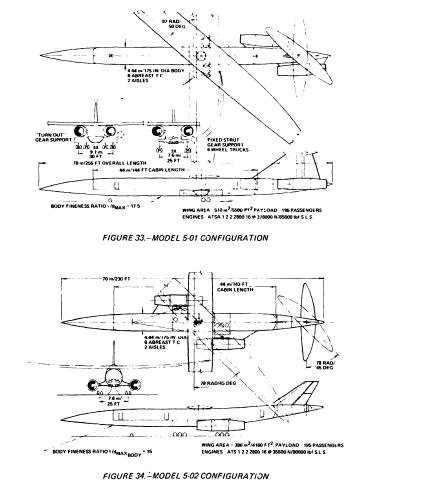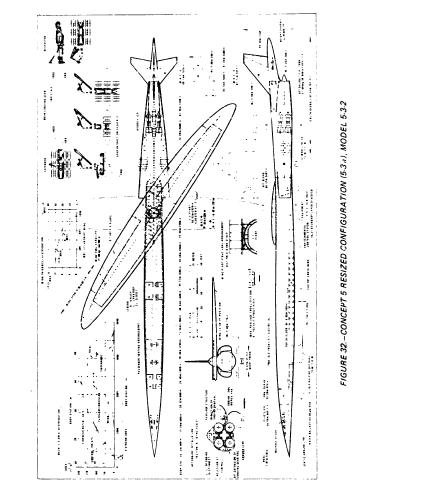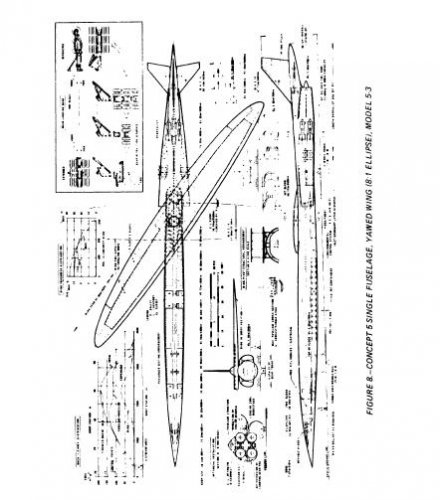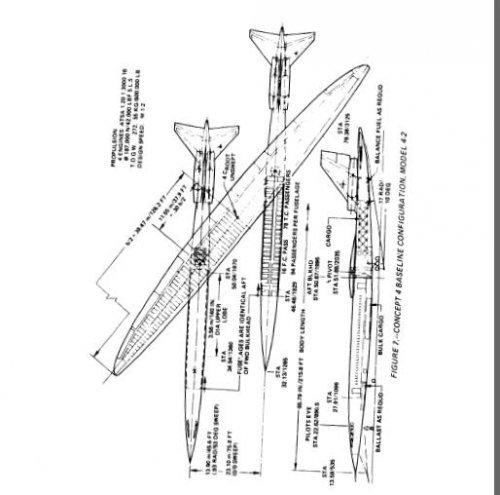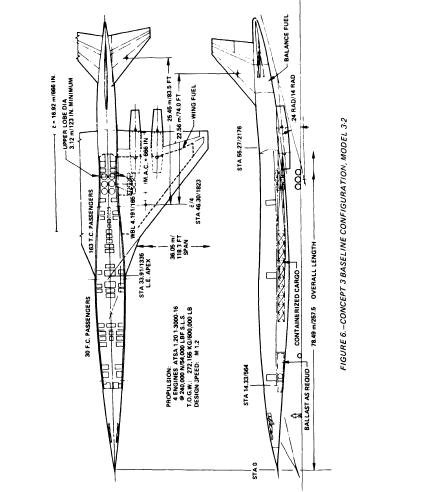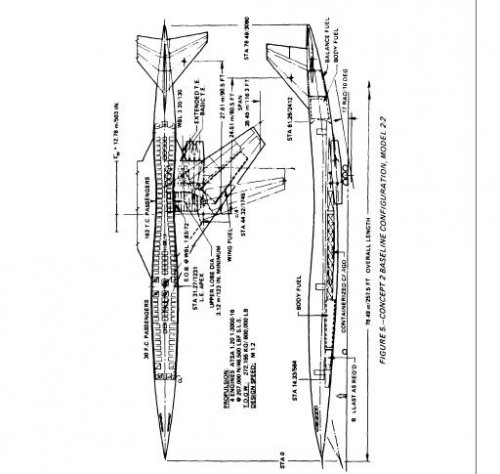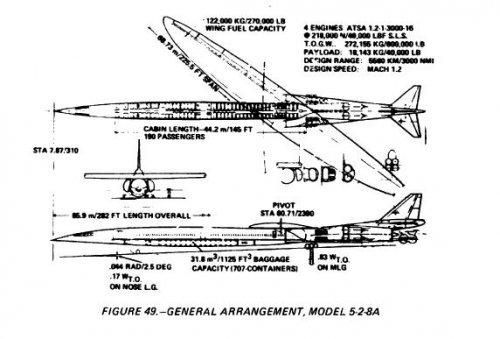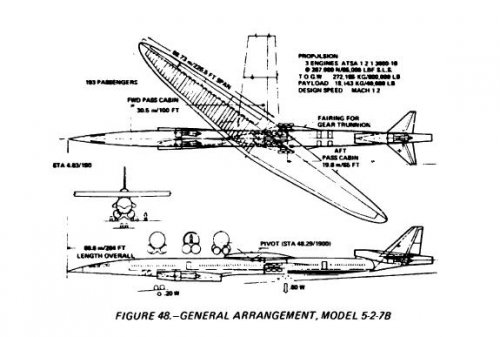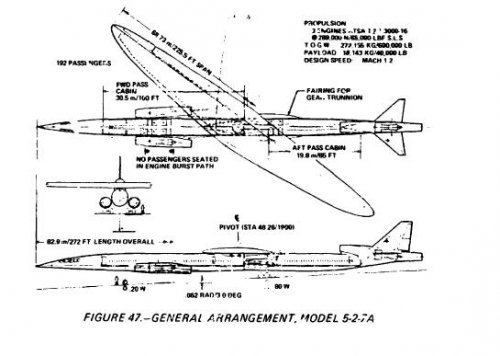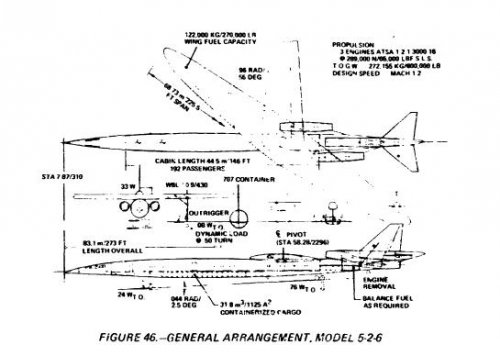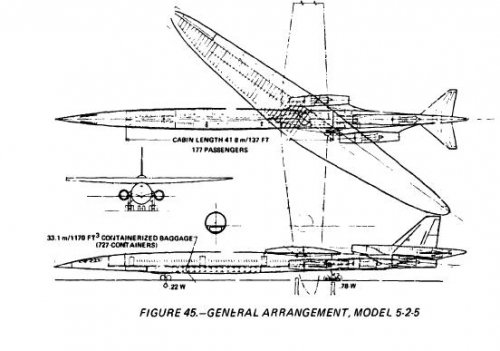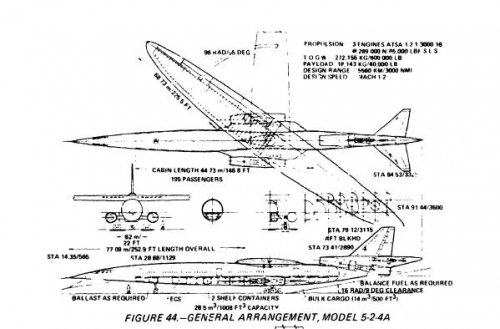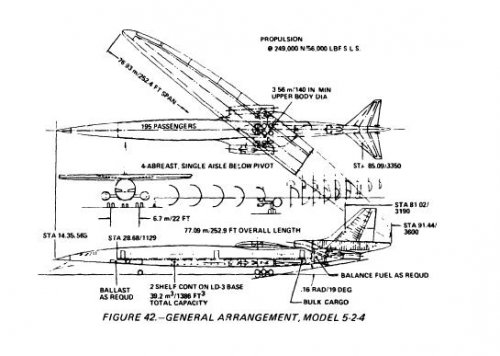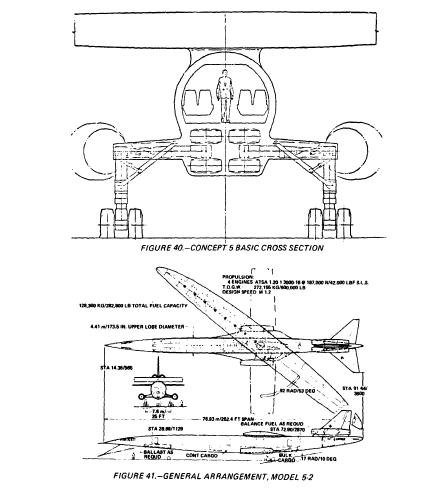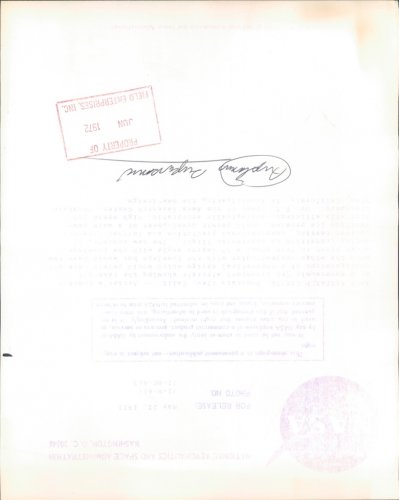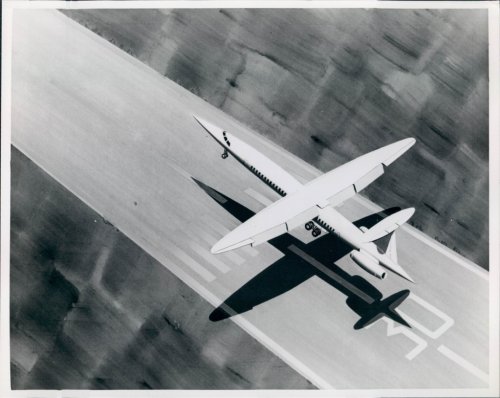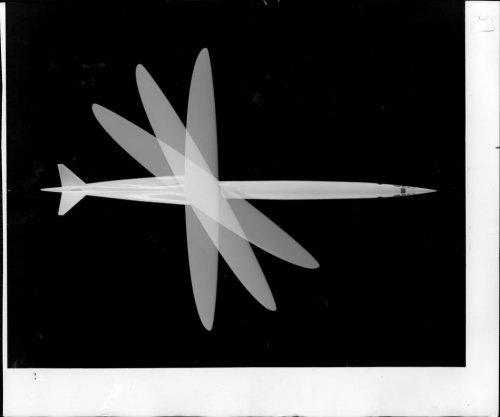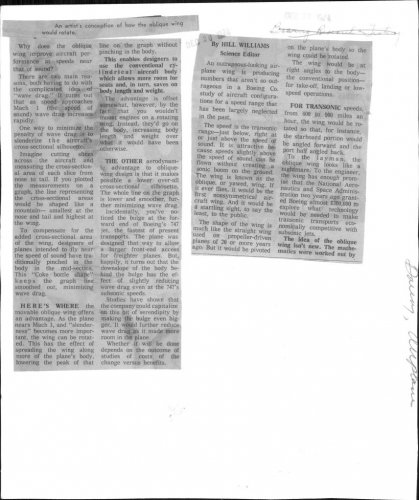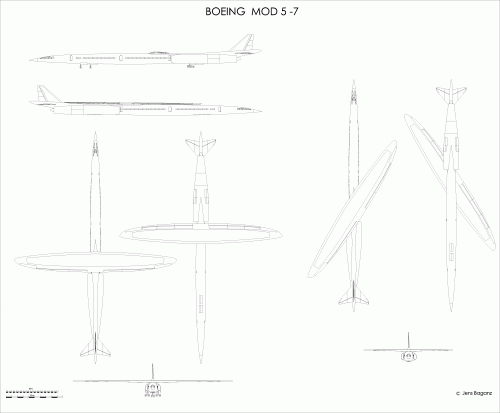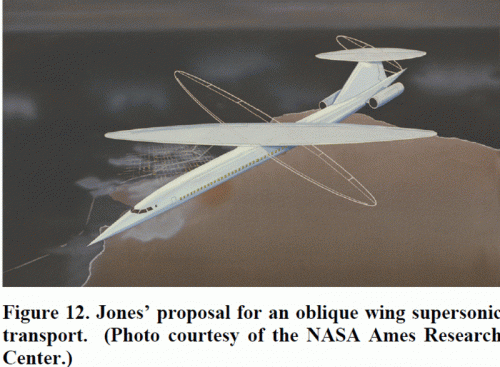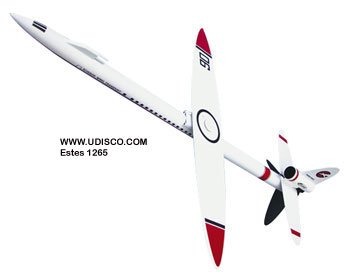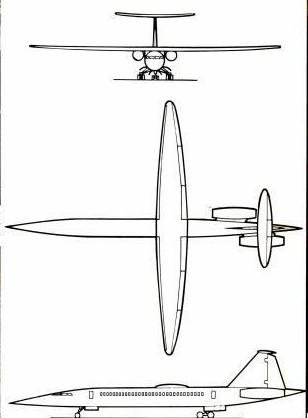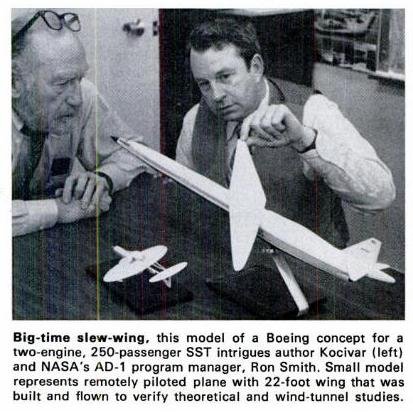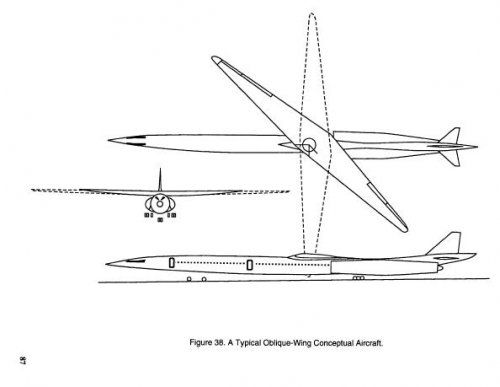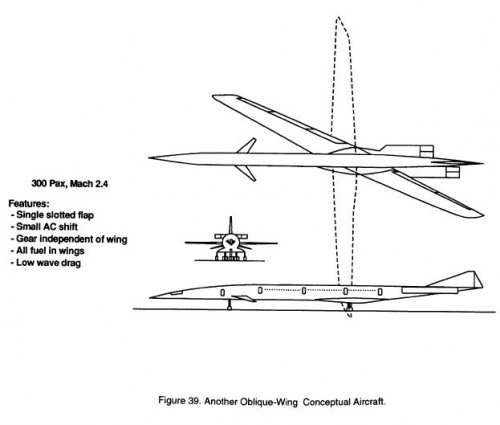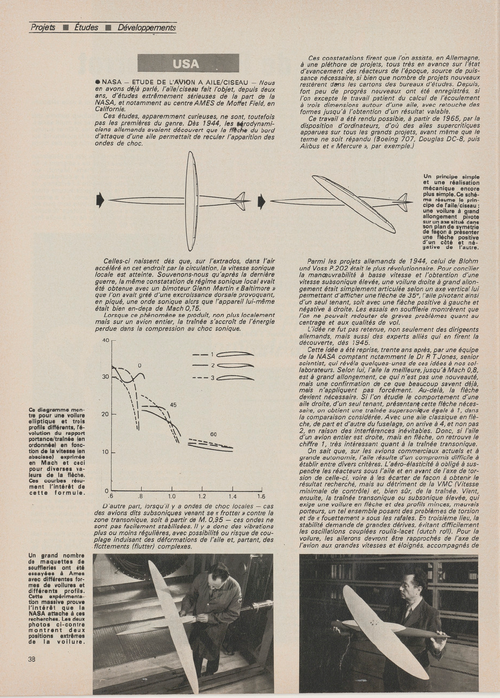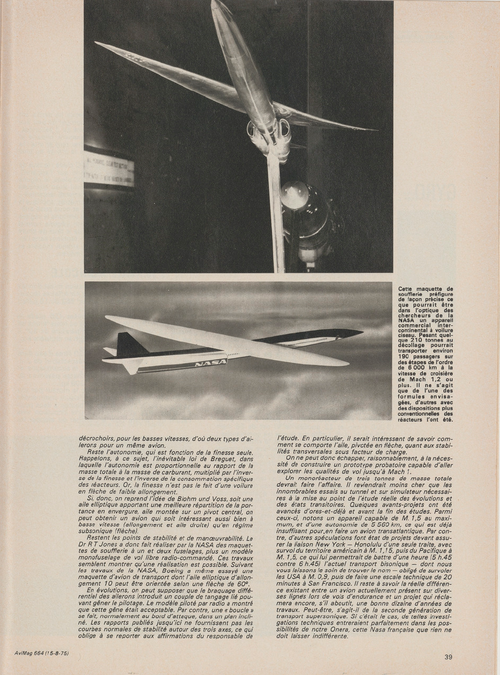You are using an out of date browser. It may not display this or other websites correctly.
You should upgrade or use an alternative browser.
You should upgrade or use an alternative browser.
Boeing/NASA Transonic Oblique Wing Transport
- Thread starter blackkite
- Start date
- Joined
- 26 May 2006
- Messages
- 34,952
- Reaction score
- 15,858
Hi,
I think a SST version of Rockwell B-1,and incredible NASA SST aircraft
and oblique wing SST aircraft.
Boeing CR-114658 High transonic speed transport aircraft study (1974)
 ntrs.nasa.gov
ntrs.nasa.gov
I think a SST version of Rockwell B-1,and incredible NASA SST aircraft
and oblique wing SST aircraft.
Boeing CR-114658 High transonic speed transport aircraft study (1974)
High transonic speed transport aircraft study - NASA Technical Reports Server (NTRS)
An initial design study of high-transonic-speed transport aircraft has been completed. Five different design concepts were developed. These included fixed swept wing, variable-sweep wing, delta wing, double-fuselage yawed-wing, and single-fuselage yawed-wing aircraft. The boomless supersonic...
Attachments
Last edited by a moderator:
- Joined
- 26 May 2006
- Messages
- 34,952
- Reaction score
- 15,858
OM
ACCESS: Top Secret
...With regards to the oblique "scissor" wing variant, has anyone seen studies on stability with one engine out?
- Joined
- 11 March 2006
- Messages
- 8,629
- Reaction score
- 3,840
"...With regards to the oblique "scissor" wing variant, has anyone seen studies on stability with one engine out?"
No, not explicitely, but in all designs shown here, the engines are placed near the centerline and
even in the model 5-06 they are, when the wing is in the slewed position. As early studies had already
shown, problems with stability were surprisingly small (see http://www.obliqueflyingwing.com/OWhistory.pdf ),
so I would suppose, that problems with asymmetrical thrust, due to one engine out wouldn't be much
greater, than for a conventional design.
Question remains, why this idea hasn't been accepted more widely still yet ! ???
No, not explicitely, but in all designs shown here, the engines are placed near the centerline and
even in the model 5-06 they are, when the wing is in the slewed position. As early studies had already
shown, problems with stability were surprisingly small (see http://www.obliqueflyingwing.com/OWhistory.pdf ),
so I would suppose, that problems with asymmetrical thrust, due to one engine out wouldn't be much
greater, than for a conventional design.
Question remains, why this idea hasn't been accepted more widely still yet ! ???
Artist's impression of NASA supersonic transport concept circa 1972.
URL: http://cgi.ebay.com/Wire-Photo-1972-NASA-artist-concept-of-Supersonic-air_W0QQitemZ200443372513QQcmdZViewItemQQptZArt_Photo_Images?hash=item2eab5b23e1
Seller's description:
URL: http://cgi.ebay.com/Wire-Photo-1972-NASA-artist-concept-of-Supersonic-air_W0QQitemZ200443372513QQcmdZViewItemQQptZArt_Photo_Images?hash=item2eab5b23e1
Seller's description:
You are bidding on a photo from 1972 featuring a NASA artist concept of the supersonic airplane. This photo originates from the archives of Chicago Sun Times and Chicago Daily News. Most photos have never been seen by the public. These photos are not reproductions or reprints. This photo measures 8” by 10” and is in excellent condition.
Attachments
Boeing oblique wing SST
Source:
An artist's conception of how the oblique wing would rotate. Why does the oblique wing improve aircraft performance at speeds near that of sound? There are two main reasons, both having to do with the complicated idea of "wave drag." It turns out that as speed approaches Mach 1 (the speed of sound) wave drag increases rapidly. One way to minimize the penalty of wave drag is to slenderize the aircralft's cross-sectional silhouette. Imagine cutting slices across , the aircraft and measuring the cross-sectional area of each slice from nose to tail. If you plotted the measurements on a graph, the line representing the cross-sectional areas would be shaped like a mountain - smallest at the nose and tail and highest at the wing. To compensate for the added cross-sectional area of the wing, designers of planes intended to fly near the speed of sound have traditionally pinched in the body in the mid-section. This "Coke bottle shape" keeps the graph line smoothed out, minimizing wave drag. Here1974-12-20T14:02:35+05:30que wing offers an advantage. As the plane nears Mach 1, and "slenderness" becomes more important, the wing can be rotated. This has the effect of spreading the wing along more of the plane's body, lowering the peak of that line on the grapy without pinching in the body. This enables designers to use the conventional cylindrical aircraft body which allows more room for seats and, in turn, saves on body length and weight. The advantage is offset somewhat, however, by the fact that you wouldn't mount engines on a rotating wing. Instead, they'd go on the body, increasing body length and weight over what it would have been otherwise. The Other aerodynamic advantage to oblique-wing design is that it makes possible a lower over-all cross-sectional silhouette. The whole line on the graph is lower and smoother, further minimizing wave drag
Source:
Attachments
Last edited by a moderator:
- Joined
- 25 June 2009
- Messages
- 14,767
- Reaction score
- 6,213
Re: Boeing oblique wing SST
From TRANSONIC TRANSPORT WINGS—OBLIQUE OR SWEPT?, January 1974
by Robert T. Jones (Ames Research Center) and John W. Nisbet (Boeing Commercial Airplane Company)
 ntrs.nasa.gov
ntrs.nasa.gov
 ntrs.nasa.gov
ntrs.nasa.gov
From TRANSONIC TRANSPORT WINGS—OBLIQUE OR SWEPT?, January 1974
by Robert T. Jones (Ames Research Center) and John W. Nisbet (Boeing Commercial Airplane Company)
Transonic transport wings - Oblique or swept - NASA Technical Reports Server (NTRS)
A comparative evaluation of fixed-geometry and variable-sweep wing designs, a fixed delta wing, and oblique wings with a single body or two bodies suggests that an oblique wing is preferable in a transonic transport aircraft in terms of gross weight, fuel consumption, and aircraft noise, and...
Transonic transport wings - Oblique or swept - NASA Technical Reports Server (NTRS)
Oblique-wing twin- and single-fuselage transonic transport models were wind tunnel tested and showed superior aerodynamic efficiency to that of fixed-swept-wing, variable-sweep-wing, and delta-wing configurations similarly tested. The oblique-wing airplane had the smallest gross weight and...
Attachments
-
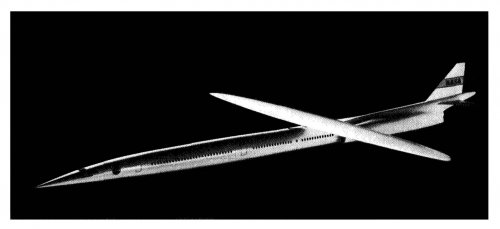 Boeing Oblique Wing.jpg177.1 KB · Views: 429
Boeing Oblique Wing.jpg177.1 KB · Views: 429 -
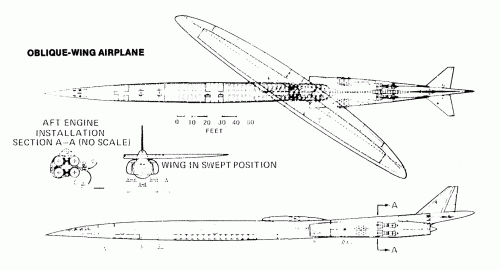 Oblique-Wing Airplane.gif71.7 KB · Views: 263
Oblique-Wing Airplane.gif71.7 KB · Views: 263 -
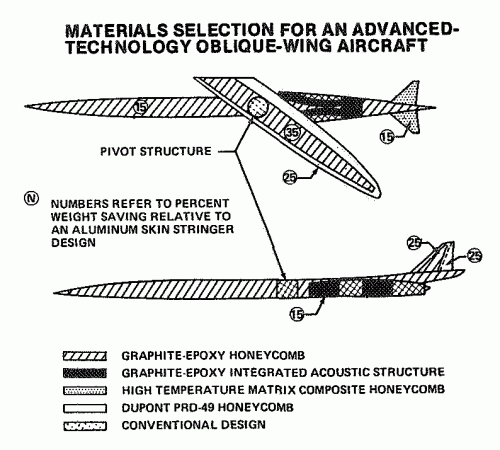 Oblique-Wing Airplane - Materials Selection.gif50.8 KB · Views: 192
Oblique-Wing Airplane - Materials Selection.gif50.8 KB · Views: 192 -
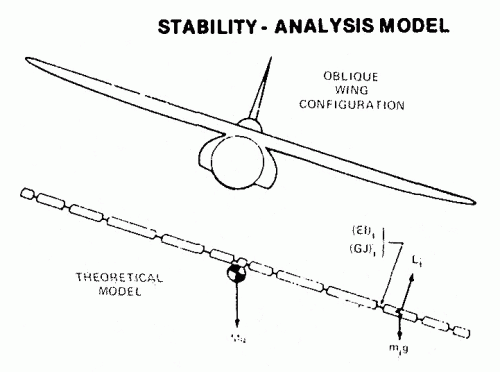 Oblique-Wing Airplane - Stability Analysis Model.gif25.1 KB · Views: 135
Oblique-Wing Airplane - Stability Analysis Model.gif25.1 KB · Views: 135 -
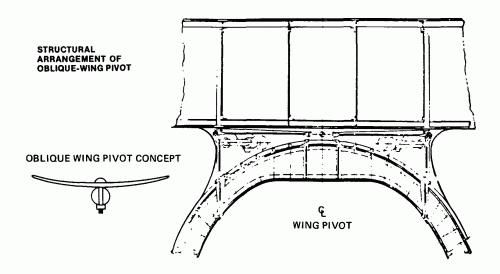 Oblique-Wing Pivot - Structural Arrangement.gif100.4 KB · Views: 141
Oblique-Wing Pivot - Structural Arrangement.gif100.4 KB · Views: 141
Last edited by a moderator:
- Joined
- 11 March 2006
- Messages
- 8,629
- Reaction score
- 3,840
- Joined
- 26 May 2006
- Messages
- 34,952
- Reaction score
- 15,858
Why we open a new topic for this aircraft,we spoke about it enough here;
Attachments
Last edited by a moderator:
- Joined
- 9 October 2009
- Messages
- 22,041
- Reaction score
- 13,759
Is that an asymmetric engine layout on the second concept?
- Joined
- 26 May 2006
- Messages
- 34,952
- Reaction score
- 15,858
OK my dear Jemiba;
 ntrs.nasa.gov
ntrs.nasa.gov
Potential impacts of advanced aerodynamic technology on air transportation system productivity - NASA Technical Reports Server (NTRS)
Summaries of a workshop held at NASA Langley Research Center in 1993 to explore the application of advanced aerodynamics to airport productivity improvement are discussed. Sessions included discussions of terminal area productivity problems and advanced aerodynamic technologies for enhanced high...
Last edited by a moderator:
- Joined
- 27 December 2005
- Messages
- 17,785
- Reaction score
- 26,749
Boeing NASA-CR-151928 Oblique wing transonic transport configuration development (1977)
 ntrs.nasa.gov
ntrs.nasa.gov
Oblique wing transonic transport configuration development - NASA Technical Reports Server (NTRS)
Studies of transport aircraft designed for boom-free supersonic flight show the variable sweep oblique wing to be the most efficient configuration for flight at low supersonic speeds. Use of this concept leads to a configuration that is lighter, quieter, and more fuel efficient than symmetric...
Last edited:
- Joined
- 27 December 2005
- Messages
- 17,785
- Reaction score
- 26,749
NASA's Robert T Jones Patent
 ntrs.nasa.gov
ntrs.nasa.gov
Oblique-wing supersonic aircraft - NASA Technical Reports Server (NTRS)
An aircraft including a single fuselage having a main wing and a horizontal stabilizer airfoil pivotally attached at their centers to the fuselage is described. The pivotal attachments allow the airfoils to be yawed relative to the fuselage for high speed flight, and to be positioned at right...
- Joined
- 27 December 2005
- Messages
- 17,785
- Reaction score
- 26,749
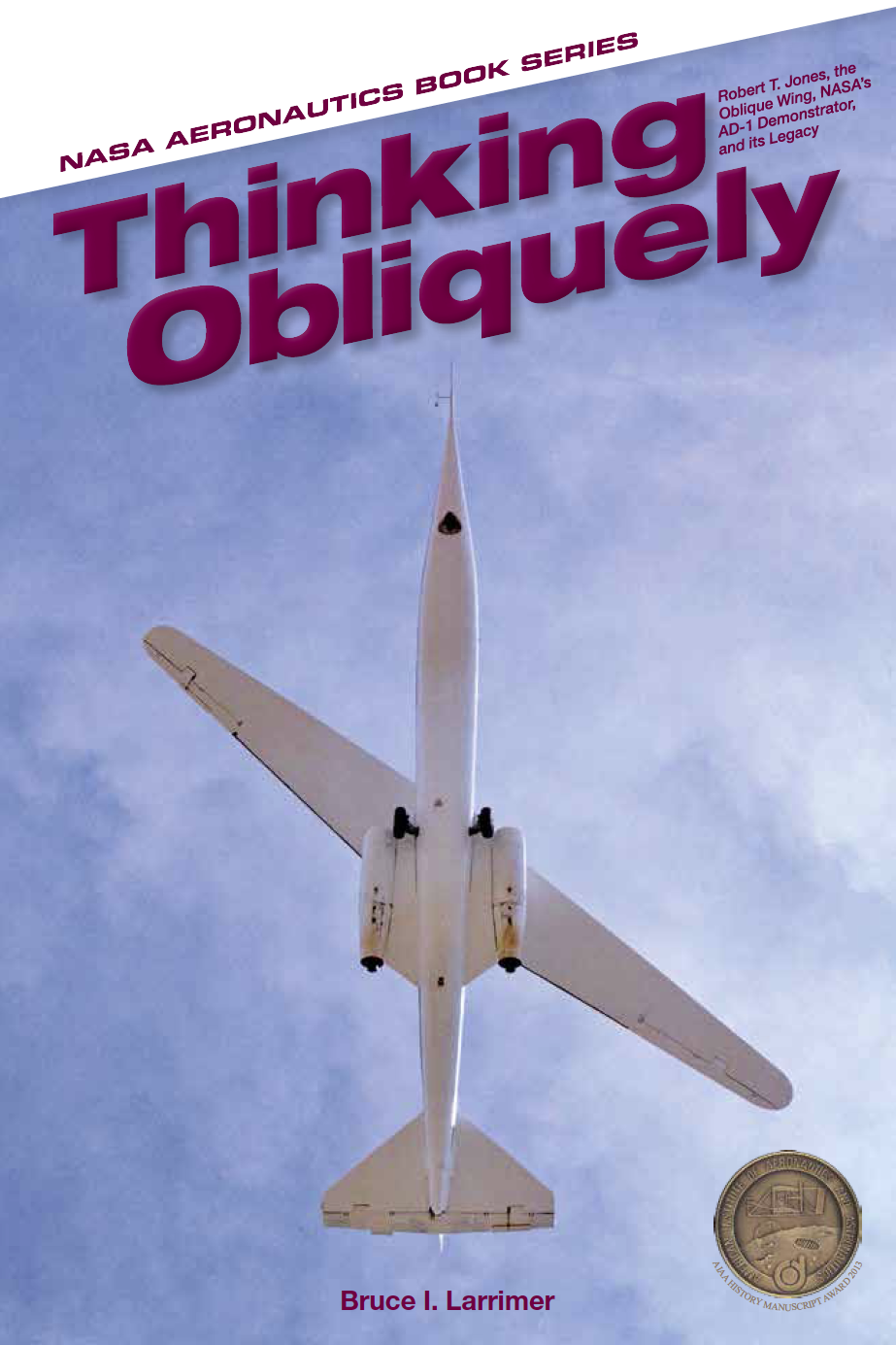
Thinking Obliquely: Robert T. Jones, the Oblique Wing, NASA's AD-1 Demonstrator, and its Legacy - NASA
On December 21, 1979, the National Aeronautics and Space Administration (NASA) AD-1 Oblique Wing Research Aircraft (OWRA) took off from the main runway at
foiling
ACCESS: Secret
- Joined
- 12 August 2007
- Messages
- 367
- Reaction score
- 138
I'm surprised i missed this - from before my time on this site, i think. But, it is outstanding. Thanks.Re: 1972 NASA artist concept of SST
Artist impression via Michael J.Hirschberg/David M.Hart "A Summary Of A Half-Century of Oblique Wing Research"
- Joined
- 11 March 2012
- Messages
- 3,253
- Reaction score
- 3,192
NASA’s research into oblique wings started in a wind tunnel in California, then moved to an RC model that flew in 1976."...With regards to the oblique "scissor" wing variant, has anyone seen studies on stability with one engine out?"
No, not explicitely, but in all designs shown here, the engines are placed near the centerline and
even in the model 5-06 they are, when the wing is in the slewed position. As early studies had already
shown, problems with stability were surprisingly small (see http://www.obliqueflyingwing.com/OWhistory.pdf ),
so I would suppose, that problems with asymmetrical thrust, due to one engine out wouldn't be much
greater, than for a conventional design.
Question remains, why this idea hasn't been accepted more widely still yet ! ???
The AD-1 prototype encountered problems with roll/pitch coupling at steep sweep angles.
NASA commissioned Ames Industrial Corporation, who in turn sub-contracted Burt Rutan’s Scaled Composites to build a single-seater proof-of-concept airframe. Wing sweep angle could be adjusted from 0 to 60 degrees while in flight. It flew 79 flights out of Edwards AFB from 1979 to 1982.
Two small TRS 18 jet engines were staggered - on opposite sides of the fuselage - presumably to reduce profile drag. Think Witcomb’s “Coke bottle” area rule.
Last edited:
TimothyC
Arnie Holmes
- Joined
- 31 March 2010
- Messages
- 30
- Reaction score
- 58
Re: Boeing oblique wing SST
From TRANSONIC TRANSPORT WINGS—OBLIQUE OR SWEPT?, January 1974
by Robert T. Jones (Ames Research Center) and John W. Nisbet (Boeing Commercial Airplane Company)
Transonic transport wings - Oblique or swept - NASA Technical Reports Server (NTRS)
A comparative evaluation of fixed-geometry and variable-sweep wing designs, a fixed delta wing, and oblique wings with a single body or two bodies suggests that an oblique wing is preferable in a transonic transport aircraft in terms of gross weight, fuel consumption, and aircraft noise, and...ntrs.nasa.gov
Transonic transport wings - Oblique or swept - NASA Technical Reports Server (NTRS)
Oblique-wing twin- and single-fuselage transonic transport models were wind tunnel tested and showed superior aerodynamic efficiency to that of fixed-swept-wing, variable-sweep-wing, and delta-wing configurations similarly tested. The oblique-wing airplane had the smallest gross weight and...ntrs.nasa.gov
While neither of those links actually generate the paper in question, it is included in the Collective Works of Robert T. Jones, which is here: https://ntrs.nasa.gov/citations/19760011971 starting on PDF Page 817.
May I please know what engines were proposed to use for this aircraft?Hi! NASA obligue wing sst.
Similar threads
-
Boeing oblique wing commercial jet transport aircraft
- Started by hesham
- Replies: 2
-
Boeing studied five transonic aircraft from 1970s
- Started by hesham
- Replies: 2
-
Boeing (McDonnell Douglas) Oblique Flying Wing commercial transport
- Started by flateric
- Replies: 5
-
Rockwell OWRA F-8 Oblique Wing Aircraft
- Started by hesham
- Replies: 10
-
Rockwell USN VFMX oblique wing fighter
- Started by overscan (PaulMM)
- Replies: 19

